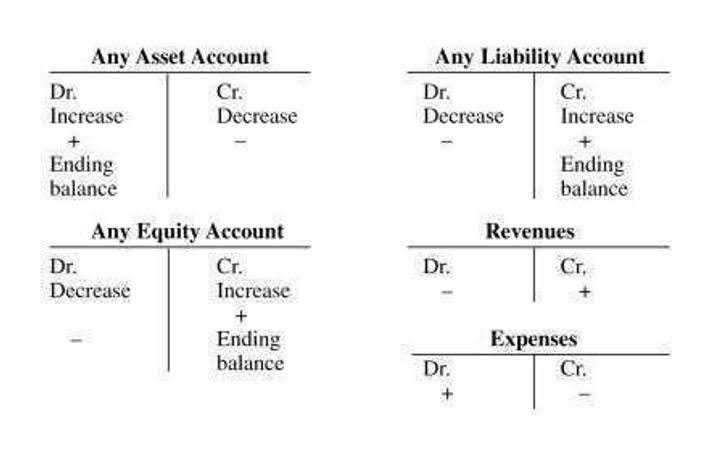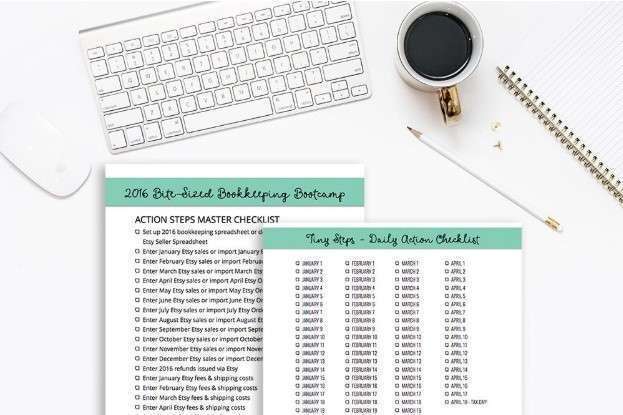
An example of double-entry accounting would be if a business took out a $10,000 loan and the loan was recorded in both the debit account and the credit account. The cash (asset) account would be debited by $10,000 and the debt (liability) account is credited by $10,000. Under the double-entry system, both the debit and credit accounts will equal each other. If a business buys raw materials by paying cash, it will lead to an increase in the inventory (asset) while reducing cash capital (another asset). Because there are two or more accounts affected by every transaction carried out by a company, the accounting system is referred to as double-entry accounting.
- Depending on the type of account, the amount will be entered into either the left-hand side of the T, or the right-hand side of the T.
- They are amazing comparison tools, but you should not rely on them in isolation.
- You can set up a solver model in Excel to reconcile debits and credits.
- A business activity is the selling, buying,borrowing or loan of items, cash, goods or services.
- This can be spending on equipment, property, or expenses involved in the manufacturing of a product.
Example of a Double-Entry Bookkeeping System

Financial Compliance – Legal businesses have to submit to tax law and regulations. Accounting makes sure that you are accomplishing your money management in compliance with the law. Your accountant and team of bookkeepers ensure you have all the information and papers you need to file your taxes on time. Accounting software has become advanced and can make bookkeeping and accounting processes much easier. The software can reconcile data from different accounts and automate accounting processes. The concept of double-entry bookkeeping can date back to the Romans and early Medieval Middle Eastern civilizations, where simplified versions of the method can be found.
What Are the Different Types of Accounts?
Investing activities include cash flow from long-term investments, such as purchasing equipment or property. Financing activities include cash from sources such as loans and equity investments. By understanding how debits and credits work, you can ensure that your financial records are accurate and up-to-date. The accounts receivable account and accounts payable account are two important aspects of accounting. The equity account on the balance sheet is a record of the equity that the owners have in the company. An expense account is a record of all the money that a company has spent on operating costs.
When was double-entry bookkeeping invented?

It is important to keep accurate records of expenses in order to make informed decisions about where to allocate resources. Ultimately, the expense account is a valuable financial tool that can help businesses save money and improve their bottom line. A revenue account is an essential part of business accounting that records revenue. This can include money earned from selling products or services, interest income and other forms of revenue. When you make the payment, your account payable decreases by $780, and your cash decreases by $780.
How debits and credits affect equity accounts
- These definitions become important when we use the double-entry bookkeeping method.
- Imagine that you want to buy an asset, such as a piece of office furniture.
- The Equity (Mom) bucket keeps track of your Mom’s claims against your business.
- A revenue account is an essential part of business accounting that records revenue.
- In order to achieve the balance mentioned previously, accountants use the concept of debits and credits to record transactions for each account on the company’s balance sheet.
The terms are often abbreviated to DR which originates from the Latin ‘Debere’ meaning to owe and CR from the Latin ‘Credere’ meaning to believe. The debit and credit sides of a ledger should always be equal in double-entry accounting. Bookkeeping supports every other accounting process, including the production of financial statements and the generation of management reports for company decision-making.

Conclusion on Accounting Basics Cheat Sheet
The account is usually listed on the balance sheet after the Inventory account. Dependable accounting software will be written/coded to enforce the rule of debits equal to credits. In other words, a transaction will be accepted and processed only if the amount of the debits is equal to the amount of the credits. It also provides an accurate record of all transactions, which can help to reduce the risk of fraud. The term “double entry” has nothing to do with the number of entries made in a business account. Rather, it relates to the two-sided nature of every transaction.
- This allows for more consistent financial reporting and comparative analysis.
- If done correctly, your trial balance should show that the credit balance is the same as the debit balance.
- The general journal is an initial record where accountants log basic information about a transaction, such as when and where it occurred, along with the total amount.
- In this case, assets (+$10,000 in inventory) and liabilities (+$10,000) are both affected.
- Adam Hayes, Ph.D., CFA, is a financial writer with 15+ years Wall Street experience as a derivatives trader.
This program can identify revenue and expenses, calculate profits and losses, and run automatic checks and balances to notify you if something needs your attention. Though it may seem daunting at first, understanding the basic concepts of accounting is essential for anyone who wants to enter the business world. By learning about accounts receivable and accounts payable, debit and credit, and the four financial statements, you can better understand how businesses keep track of their finances.
Debits and Credits Cheat Sheet: A Handy Beginner’s Guide
For businesses in the United States, the Financial Accounting Standards Board (FASB), is a non-governmental body. They decide on the generally accepted accounting principles (GAAP), which are the official rules and methods for double-entry bookkeeping. An accountant would say that we are crediting the double entry accounting cheat sheet bank account $600 and debiting the furniture account $600. Recording what happens to each of these buckets using full English sentences would be tedious, so we need a shorthand. Note that one T-account (Rent Expense) has a debit of 2,000 and that one T-account (Cash) has a credit amount of 2,000.
Debits and Credits Outline
- Cash Basis – Amounts are recorded the minute you get paid or make a payment.
- This complexity can be time-consuming as well as more costly; however, in the long run, it is more beneficial to a company than single-entry accounting.
- A company selling merchandise on credit will record these sales in a Sales account and in an Accounts Receivable account.
- A gain is measured by the proceeds from the sale minus the amount shown on the company’s books.
- You see a list of deposits, a list of purchases, and the difference between the two equals the cash on hand.
If you debit a cash account for $100, it means you add the money to the account, and if you credit it for $100, it means you subtract that money from the account. Debits and credits tend to come up during the closing periods of a real estate transaction. The debit section highlights how much you owe at closing, with credit covering the amount owed to you.

You see a list of deposits, a list of purchases, and the difference between the two equals the cash on hand. For very small businesses with only a handful of transactions, single-entry bookkeeping can be sufficient for their accounting needs. So you’d have to record the transaction as a $1,000 debit in your cash account and a $1,000 in your bank loan account. There is also a difference in how they show up in your books and financial statements. Credit balances go to the right of a journal entry, with debit balances going to the left.